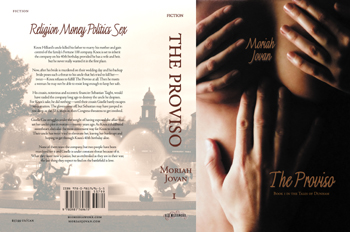And so begins a post (or series of them) (you know how wishy-washy I am) on Dunham, the privateer-heroine and pirate-hero Revolutionary War swashbuckler, which, for those of you not following the serial, will be available for sale July 4, 2013.
To kick it off, here’s the final cover for the official book:
I struggled with the question of whether to go with a slightly modified version of the serial’s cover to deal with familiarity to those who’ve followed the story all year (yes, almost a year!). But in the end, I decided not to. Why? Several reasons.
1. At and during the RT Booklovers convention two weeks ago in Kansas City, I had a few marketing epiphanies courtesy of Tracey Reid (but most of which I can’t articulate yet, which is why I haven’t written about it).
2. My attempt at articulating this epiphany to my friend Melissa Blue brought forth an issue I hadn’t thought about: my books’ covers. ALL OF THEM. The fact that they needed a serious makeover. And that it must be done before Dunham was released to take advantage of the marketing wave.
3. So I did that. The Proviso, Stay, Magdalene, and “Twenty-dollar Rag” have new covers. In a different post, I’ll talk about the evolution of those, as I did before, long ago when I was just starting out.
4. After I had done that, I realized that the variation of the serial cover I had made could not conform to the format I’d made for the previous titles, so I scrapped it and redid it from scratch.
I also decided to remove the series tag from Dunham and, subsequently, book 5, which is a post-apocalypse polyandry tale (as yet not officially titled). That, too, was for a reason: people see a series number and assume that the series has an overall arc and that book X is NEXT in the chronology. It makes them less inclined to pick it up because who wants to start something in the middle of a series? Even so, the four contemporary ones above, while perfectly able to be read alone, are, in fact, chronological, and so the series tag is appropriate.
Yet I needed the cover of Dunham to conform with the first four while still being separate. You will also notice that the featured couple is on the back instead of the front. Why was this? Because Dunham is as much epic adventure as it is romance, I want to capture male readers. There are ships involved and thus, naval battles.[1]
And so we have a cover that reflects the pattern of the four contemporary covers, but is also separate.
People DO judge a book by its cover because marketing has evolved so much that people can tell exactly what’s in it. Well. Maybe not exactly. But close enough to the target market to do the job.
____________
[1] I have done as well as I could regarding ship details and battles involving tall ships, which, I will have you know, is very difficult to come by for this very narrow window of time. It was a time of shipbuilding upheaval and drastic changes in naval warfare that began somewhere around 1760 and ended right around 1798, from which evolved the zenith of tall ship building and warfare, on display at the Battle of Trafalgar in 1805. In short, a LOT of significant things happened in shipbuilding technology and naval warfare between 1780 and 1805.




 Offended.
Offended. I like the longer single-title contemporary romance (no suspense, thanks, and the category lengths are just way too short) and lately, the ones I really like have been coming out of the smaller e-presses. They’re not as well edited as I’d like, but they’re fun reads whose story lines seem to stick with me quite a while.
I like the longer single-title contemporary romance (no suspense, thanks, and the category lengths are just way too short) and lately, the ones I really like have been coming out of the smaller e-presses. They’re not as well edited as I’d like, but they’re fun reads whose story lines seem to stick with me quite a while.


 Hide-a-Book [dead link]. For keeping your deliciously wicked covers under wrap wherever decidedly un-wicked people will be staring at you funny.
Hide-a-Book [dead link]. For keeping your deliciously wicked covers under wrap wherever decidedly un-wicked people will be staring at you funny.